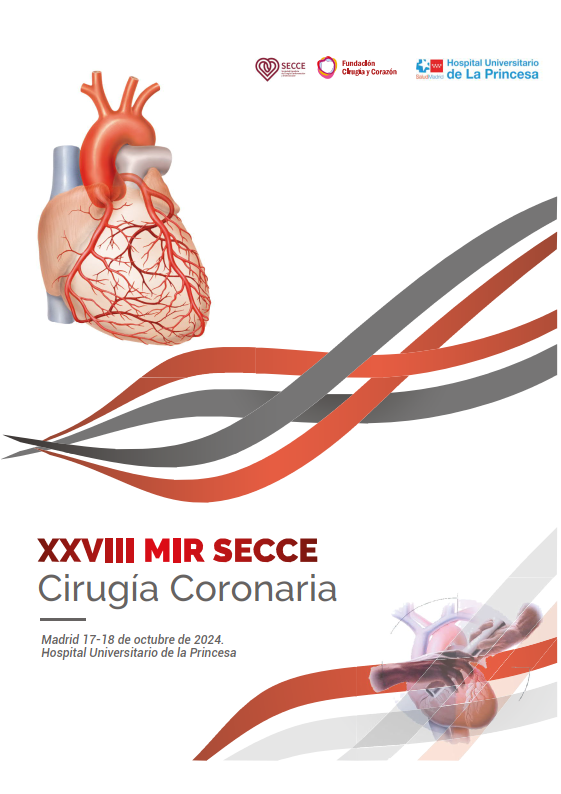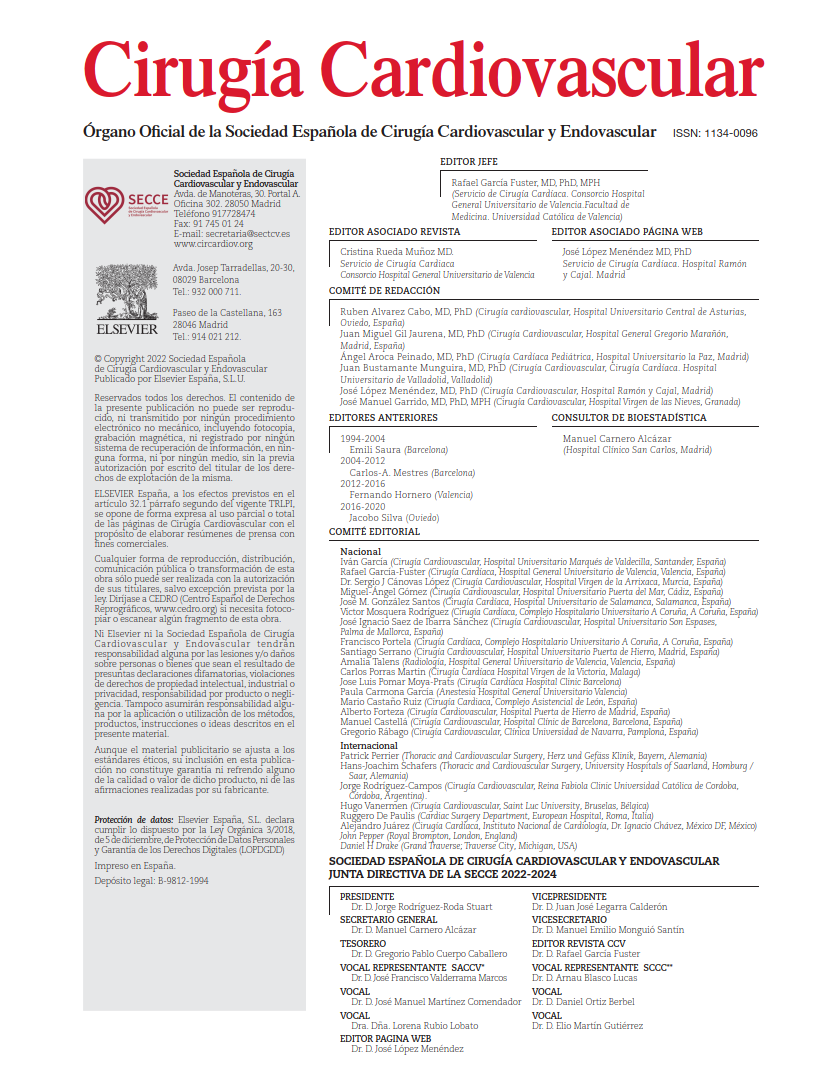The Achilles’ heel of aortic root remodeling (Yacoub technique), in contrast to valve reimplantation (David procedure), has always been the correction and stabilization of the aortoventricular junction—an integral component of the functional aortic valve annulus. In ElKhoury’s classification, particularly in type Ib and especially Ic mechanisms, annular dilatation constitutes a key pathophysiologic component leading to aortic regurgitation. In practical terms, annular dilatation or “anuloectasia” is defined intraoperatively by a Hegar dilator diameter exceeding 25 mm. Although this threshold should ideally be indexed to the patient’s body surface area, it has been shown that leaving the aortoventricular diameter above this value is an independent risk factor for recurrent aortic regurgitation—even after root replacement surgery.
The group led by Lansac has played a pivotal role in evolving the original technique described by Magdi Yacoub, introducing the key modification of externally stabilizing the aortoventricular junction. In their initial experience (2003–2007), a homemade ring fashioned from a Dacron graft was used; subsequently (from 2007 onward), they adopted a calibrated, commercially available ring—CORONEO®. Their standardized surgical protocol, summarized by the acronym CAVIAAR, dictates procedural steps. Ring selection is based on intraoperative measurement of the aortoventricular junction using a Hegar dilator, accounting for the depth of subannular dissection and surrounding tissue thickness, and assuming that the internal diameter will be approximately 4 mm less than the chosen external ring. The remainder of the procedure is detailed in the original paper and related literature, including technical refinements unique to this group:
- Placement of 6–7 subannular sutures to secure the CORONEO® ring
- Commissural fenestration repair with decellularized CardioCel® patches when needed
- Use of Valsalva-type grafts for root remodeling
The present study reviews the institutional experience at Pitié-Salpêtrière Hospital in Paris, encompassing 375 aortic root remodeling procedures either performed or directly supervised by Emmanuel Lansac. Of these, 86 patients underwent repair with the homemade Dacron ring, while the remaining 289 received the CORONEO® ring.
Thirty-day overall survival was 99.0%, and early reoperation due to repair failure was rare (0.3%). No patient was discharged with greater than mild (1+) aortic regurgitation.
In terms of hemodynamic performance, the CORONEO® ring combined with the Valsalva-type graft yielded superior and more physiologic systolic distensibility of the aortic root, compared with the earlier use of a subvalvular Dacron ring and a likely straight conduit. However, the dynamics of the sinotubular junction and ascending aorta were not significantly altered between groups, as no material-related differences were observed. Mean transvalvular gradients were also similar, averaging 6 mmHg.
After a decade of experience and a mean follow-up exceeding 4 years, a propensity-matched analysis comparing the Dacron and CORONEO® groups revealed improved outcomes for the more recent cohort: higher survival (93.3% vs 79.9%), lower reoperation rates (2.0% vs 9.7%), and reduced recurrence of moderate or greater aortic regurgitation (1.9% vs 11.2%).
CORONEO®-repaired valves demonstrated better systolic hemodynamic behavior (root distensibility 3.2% vs 2.1%), resulting in lower mean gradients (6.5 mmHg vs 7.9 mmHg).
Although statistical differences were not found between tricuspid and bicuspid valves, the clinical results favored bicuspid valves: reoperation rates were 4.3% vs 0.8%, and recurrence of ≥2+ regurgitation was 2.7% vs 1.2%, respectively. The only drawback in bicuspid valves was higher residual gradients (7.6 mmHg vs 5.5 mmHg).
Ultimately, the authors conclude that valve-sparing root replacement using the remodeling technique with external annuloplasty achieves excellent outcomes, with the CORONEO® ring offering superior results compared to the earlier homemade Dacron ring.
COMMENTARY:
The outcomes presented by this group confirm their position as one of the global leaders in aortic valve repair techniques, particularly with regard to their impressive perioperative results and repair capability. In fact, among the 486 patients undergoing surgery for aortic root aneurysm in their series, 77% were treated with the remodeling technique combined with external annuloplasty.
Without detracting from the valuable results presented, several critical considerations should be raised:
- This is a study with a promotional undertone for the CORONEO® ring, a device for which the senior author has well-known conflicts of interest. The comparison is made against a homemade Dacron band used prior to 2007 due to limited resources at that time. It is unsurprising that outcomes are better in the more recent cohort, not only due to accumulated experience but also the introduction of the Valsalva graft, which dates back to 2006 and is nearly contemporaneous with the CORONEO® ring. The hemodynamic advantages of the Valsalva graft over straight grafts are evident in the results and likely contribute to improved durability of the repair. Indeed, the differences in aortic root and aortoventricular junction expansibility between groups are striking, while no significant differences were found at the sinotubular junction or tubular portion—areas where the Valsalva graft, acting as a straight conduit, offers no added benefit.
- The comparative design is further weakened by the use of historical controls. The two cohorts—86 vs. 289 patients—are unevenly matched. Propensity score matching ultimately yielded 83 pairs of patients with a relatively young mean age of 53 years, which made them comparable. Yet, despite the imperfect correction of this approach, results before and after adjustment followed the same trends, rendering the matching somewhat superfluous.
- The authors claim that survival following aortic root replacement with valve preservation using remodeling plus external annuloplasty was comparable to that of the general population when using second-generation devices. Although Kaplan-Meier survival curves from the later cohort indeed align with general population expectations (about 90% at 10 years), the earlier group should not be penalized unfairly. These were patients operated on over a decade ago, inherently subject to lower life expectancy, with possible contributions from recurrent aortic regurgitation, the devices used, or natural changes in medical care over time.
- Despite the large surgical experience, the average follow-up was only four years, and mechanisms of recurrent regurgitation were not detailed. Based on data from other series and personal preference, the reimplantation technique appears to offer similar or even superior results over longer follow-up, as reported by David and others. This raises concerns that the center may be overextending indications for the remodeling technique with external annuloplasty. In our opinion, this technique has more limited corrective potential than reimplantation procedures (David V or David-Valsalva), and should be reserved for ElKhoury type Ib mechanisms with aortic annulus <25 mm and no associated collagenopathy.
In summary, this is an outstanding experience—not due to the featured device itself, but because of over a decade of technical refinement at this center. Therefore, we should not dismiss the early results achieved with the “beggar” Dacron ring and straight graft in favor of the “princely” CORONEO® and Valsalva graft. These early tools laid the foundation for the current achievements. Losing perspective is a sign of our times—especially when conflicts of interest exist—and disregarding the past only leads us to repeat the same mistakes.
REFERENCE:
Shraer N, Youssefi P, Garufi L, Debauchez M, Lansac E. External aortic annuloplasty with a dedicated expansible ring improves outcomes in remodeling root repair compared with homemade Dacron ring. J Thorac Cardiovasc Surg. 2025 May;169(5):1438-1451.e1. doi: 10.1016/j.jtcvs.2024.06.013.



